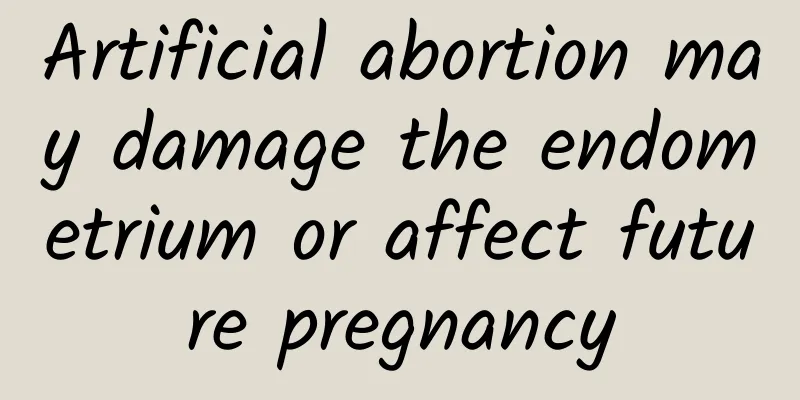Artificial abortion may damage the endometrium or affect future pregnancy

|
When a woman has her period, the functional layer of the endometrium falls off, and then the basal layer begins to proliferate and repair. If the basal layer is damaged, the endometrium loses its ability to repair. At this time, even if the ovaries function normally, there will be no menstruation. If the basal layer of the endometrium is damaged during an abortion, it is likely to cause amenorrhea. Since the uterine cavity is not covered with endometrium, adhesions may occur on the anterior and posterior walls. The clinical manifestations vary depending on the area of damage to the basal layer of the endometrium. If the basal layer is completely damaged and the anterior and posterior walls of the uterine cavity are completely adhered, the patient may have complete amenorrhea; if part of the basal layer still exists, it will manifest as a decrease in menstrual volume; if the adhesion site of the uterine cavity is close to the cervical os, and there is still healthy endometrium above the adhesion, menstrual abdominal pain, unclean menstrual blood, and even blood accumulation in the uterine cavity may occur due to poor menstrual blood outflow; if the endometrium is not damaged and only the endometrium of the cervical canal is damaged, adhesions of the cervical canal will occur, and more severe periodic lower abdominal pain may occur without menstruation. In addition to artificial abortion, postpartum curettage can also cause intrauterine adhesions. Severe purulent endometritis and tuberculous endometritis can also cause destruction of the endometrial basal layer and lead to amenorrhea. Although menstruation does not occur after the destruction of the basal layer of the endometrium, the ovarian function is normal. If there are no other symptoms and no desire to have children, no treatment is required. Tuberculous or purulent endometritis must be treated for its primary disease, but the endometrium cannot repair itself after treatment, and the patient still exhibits amenorrhea. |
>>: How long after a miscarriage can you wash your hair?
Recommend
How to diagnose miscarriage
Nowadays, it is quite common for young people to ...
Get rid of the big belly after giving birth and lose 12 kg by breastfeeding
Ally, 38 years old and 168cm tall, is a mother of...
What medicine can cure influenza quickly in adults?
When adults have a cold, quick relief of symptoms...
Is it bad for the fetus if you have cervicitis and get pregnant?
Is it bad for the fetus if you get pregnant with ...
What are the symptoms of toxic heat type uterine fibroids? What are the treatments for uterine fibroids?
Regarding the symptoms of hot uterine fibroids, w...
Several major causes of cervicitis
Cervicitis is also a gynecological disease that w...
What are the symptoms of uterine fibroids? Can uterine fibroids cause irregular bleeding?
The symptoms of uterine fibroids are not very obv...
Precautions for abortion
Things to note when having an abortion: (1) Routi...
Wear high heels to lose weight quickly? These 3 ways to suppress appetite are healthier
Wearing high heels has the effect of visually ext...
Is endometriosis difficult to treat?
The difficulty of treating endometriosis varies f...
What medicine is used for vaginitis?
Different types of vaginal inflammation require d...
What to eat for women with cervical erosion and bleeding? 12 dietary therapies for patients with cervical erosion and bleeding
In life, women with cervical erosion should be tr...
What are the causes of dysmenorrhea?
Dysmenorrhea seriously affects the patient's ...
Bartholinitis MRI
MRI examination is also an important reference fo...
5 typical symptoms of ectopic pregnancy
Ectopic pregnancy refers to the fertilized egg be...









